#What to eat in Cagayan
Explore tagged Tumblr posts
Text
The Kelaidoscope of Languages
Nueva Vizcaya is a landlocked province in the Cagayan Valley region of the Philippines. It has mountains in the west and plains in the east, with the Magat River running through. The climate has wet and dry seasons. Indigenous tribes lived there first, then the Spanish came, bringing their influence. The culture is a blend of local, Spanish, and American. Agriculture is big, along with mining and tourism. Education and healthcare exist but need to get better, especially in the countryside.
The Ilocano dialect is a vibrant and important part of the Philippine languages. Spoken by many in the Ilocos region and other areas, it has evolved over time. Ilocano has a rich set of words and a distinct, appealing sound. It's not just for talking; it's a keeper of the Ilocano culture. Through tales, music, and wise sayings, it keeps the Ilocano way alive, making Ilocanos proud and linking them to their ancestors. In this look into Ilocano, we'll explore its history, how it's structured, its vocabulary, and its cultural significance, uncovering the charm and worth of this wonderful language.
10 Rare and Intriguing Ilocano Words You Probably Don't Know
1. Naliday - Sad

ctto:https://pin.it/1nAGrNPsj
DEFINITION:
"Naliday" is an Ilocano word commonly employed to convey a feeling of sadness. It is used when one wants to express a sense of unhappiness or sorrow, much like how we use "sad" in English.
EXAMPLE:
"Hay apo! Naliday nak manen ta mabayag manen nga madik makita ni baket ko."
(Oh dear! I'm sad because I wont be seeing my wife.)
2. Malamut - Food

ctto:https://pin.it/4mNWF1yV0
DEFINITION:
"Malamut" is a term in Ilocano that is specifically used to refer to something to eat. It emphasizes the concept of food and is equivalent to the English word "food".
EXAMPLE:
"Halla! Nagapgad nga pirmi toy inlutom madi malamut ten."
(Hey! The food you cooked is really delicious.)
3. Agkallaysa - Wedding

ctto:https://pin.it/1M6r5K4b6
DEFINITION:
"Agkallaysa" is the Ilocano word for a significant ceremony where two people exchange their love and commitment, which is known as a "wedding" in English. It is the occasion when two individuals unite in matrimony.
EXAMPLE:
"Jaya partakam ta apan ta maki palanit ijay bangir nga baryo ta adda kano agkallaysa."
(Jaya come fast let's go and eat in the other village because there's going to be a wedding.)
4. Upit - Wallet

ctto:https://pin.it/79Vbn2nSV
DEFINITION:
"Upit" is an Ilocano word used to describe an object that is used to hold money. It is the equivalent of a "wallet" in English.
EXAMPLE:
"Nakitam ajay upit ko? Mapukpukaw gamin sapay dakkel jay kwartak ijay."
(Have you seen my wallet? its been missing and I have loads of money in there.)
5. Antipara - Eye glasses

ctto:https://pin.it/7uuIRa1Wo
DEFINITION:
"Antipara" is the Ilocano term for an item that is worn on the face to improve vision or simply for fashion purposes. It is known as "eye glasses" in English.
EXAMPLE:
"Ammom ngay napanak nagpa-aramid ti barbaro nga antipara ta maul-ulawak met ijay daanen."
(You know what, I bought new eye glasses because i've been feeling dizzy in the old ones.)
6. Alikutig - Annoying

ctto:https://pin.it/1QKRH1SU2
DEFINITION:
"Alikutig" is an Ilocano word that represents a behavior that can be described as annoying or mischievous. It is similar to the English words "annoying" or "mischievous".
EXAMPLE:
"Apay jay anak na ajay indadjay kasaran tattay nag pirmi alikutig na, haan nga makatalna."
(Why is that child of being so annoying? He won't stop.)
7. Ay ayatin ka - I love you

DEFINITION:
"Ay ayatin ka" is an Ilocano phrase used to express the deep emotion of love. It is the equivalent of saying "I love you" in English.
EXAMPLE:
"Ay ayatin ka nga pirpirmi, isunga di ka nga kaya nga ibati."
(I love you very much, and I can't bear to be apart from you.)
8. Pasador - Sanitary napkin

ctto:https://pin.it/7fyazg7We
DEFINITION:
"Pasador" is the Ilocano word for a product that is used by women during their menstrual cycle. It is known as a "sanitary napkin" in English.
EXAMPLE:
"Hazel apan ka man gumatang ti pasador ta kailangan na kano ni Jaya."
(Hazel, can you please buy some sanitary napkin because Jaya needs it.)
9. Ding - wen - Animals

ctto: https://pin.it/V73syfpCG
DEFINITION:
"Ding - wen" is the Ilocano term for living creatures that are not humans. It is equivalent to the English word "animals".
EXAMPLE:
"Apan mo pakanen dagijay ding - wen, mabisin san ta tattay da pay nga natagari."
(Go and feed the animals, they have been noisy for a while, I think theyre hungry.)
10. Lin - ti - Flash light

ctto:https://pin.it/5Z3iM71FG
DEFINITION:
"Lin - ti" is an Ilocano word used to refer to a portable device that emits light and is used in the dark. It is known as a "flash light" in English.
EXAMPLE:
"Apay ta madik makita jay lin - ti? Inusar na ni Jaemy di kalman tatta mapukpukawen."
(Why can't I find the flash light? Jaemy probably took it and left it somewhere.)
Hey, folks! The link to my video is right here, just waiting for you to give it a magical click!^-^
youtube
"A language is not just words. It's a culture, a tradition, a unification of a community, a whole history that creates what a community is. It's all embodied in a language." - Noam Chomsky
13 notes
·
View notes
Text
Notes on Anitismo - The Ancient Religion of the Philippines by Isabelo de los Reyes.
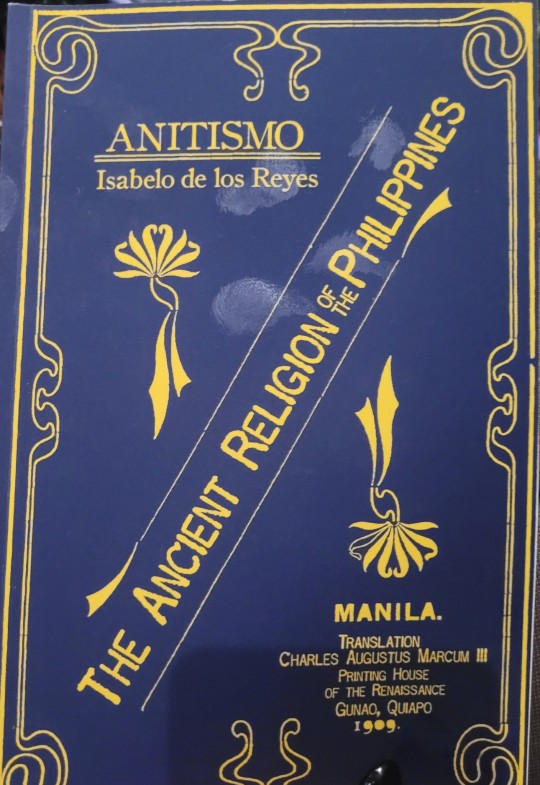
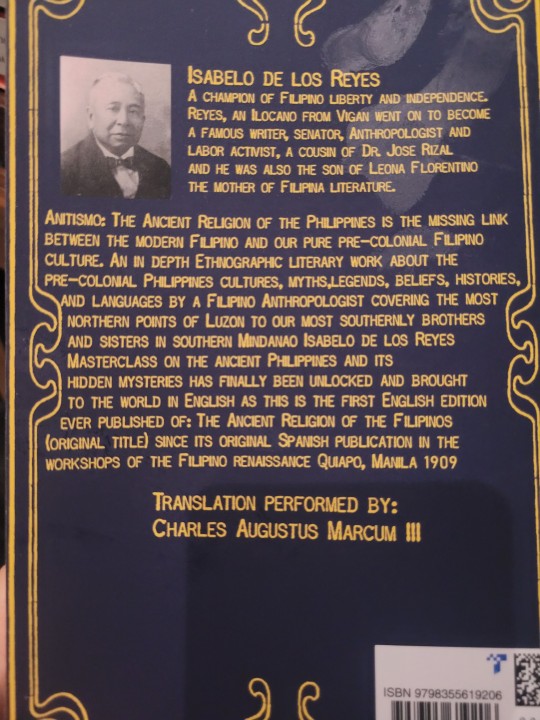
Keep in mind - this was written a while back.
Ancient Chronicles written by the Jesuit hispanic Friars state that at the that the first spaniards set foot in the Philippines from the coast of visayas to Manila there was a considerable population of Muslim converts
This was especially true for Mindanao due to conversion by Islamic teachers from Borneo
De los Reyes argues that because of this, to find native Filipino religion at its purest, we must look to the North
Distinguishing native religion without outside influence such as from Islam, Hinduism, Christianity etc can be tricky
However he argues that the traces of Native Filipino religion can be found in the stories superstitions and advice that belong to various Filipino ethnic groups (Tagalogs, Bicolanos, Zambalenos etc)
From the South of the country in Mindanao to the extreme North like Luzon, De los Reyes argues then native Filipino religion was consistent
This religion was Anitism or the Cult of Anito, meaning souls of the ancestors.
Anitism is not a monolithic religion and hosts a broad pantheon ranging from Gods to animals, nature, elements and space.
The Philippines had its own modern spiritism and De los Reyes argues this may have been the origins of the cults of "Romanist Saints" (Catholic saints) in the Philippines. By this I think he means that Filipino spirituality influenced how Filipinos proceeded with Catholic worship.
The oldest chronicles about the Philippines can be found in various museums and libraries (such as the National Library of Madrid, Covenant of St Augustine in Manila)
We can follow these chronicles, from when the Jesuit Pedro Quirino provided news of religion in the Philippines in 1604, followed by reproductions by others like the Jesuit Colin in 1663 and others such as Fr. Morga, Gonzalez de Mendoza, Aduarte etc.
Fr Morga said that Filipinos practised Anitism in certain regions like Camarines and Cagayan.
Some traditions would say that Manila and its regions were not originally native to the island - they were from Malayan islands and other remote areas.
Before the Spaniards arrived, Islamic teachers from Borneo came to preach and interacted with the locals
Their teachings and beliefs spread quickly throughout the Philippines
Fr. Grijalva writes that they (Filipinos) started adopting their traditions and took on their names.
De Los Reyes argues that Spanish conquistadors' arrival/conquest was delayed because Filipinos were already familiar with various religions and beliefs and also because of the hands of Datu Lapu Lapu. What I believe he is arguing is that Datu Lapu Lapu and the previous exposure Filipinos had to different religions at first delayed Spanish influence from spreading so quickly.
Other islanders who weren't under the control of the government in the Philippines has their beliefs influenced by religious preachers who travelled to them from the Straits of Malacca and the Red Sea.
An account, dated April 20th 1572 (preserved in the archives of India) which is from the conquest of Luzon details "In these towns, closest to the sea, they do not eat any pork, which the moors taught them. But if you ask them, they say they do not know Muhammed or his law." This account was reproduced by Wenceslao Retana.
In actuality, very few Filipinos could understand/read the teachings of the Koran despite the Islamic influence.
In Filipino traditions, reverence and worship was given to nature and the elements, and this was usually consistent throughout the islands.
Native Filipino religion beliefs include elements, animals, stars and ancestors.
Filipino religion in Manila and nearby areas was a mixture or Anitism, Buddhism, Hinduism and Islam brought by the Malays of Borneo.
Vocabulary included Sanskrit and Malay terms such as Bathala, meaning Lord.
However these terms are not used in Northern provinces.
De Los Reyes argues that Itnegs and other mountain tribes conserved and maintained the purest form of Filipino religion
In the Ilocos, Cagayan, Isabela and other provinces of Northern Luzon, native Filipino religion was more prevalent
Hindus and Buddhists converted many in Java and Malaysia.
However Muslim influence became dominant in 1478 - 60 years before the Dutch invasion.
According to Javanese legends, Hindus arrives in Java 78 years before Christ.
The first Malays came from the Minangkabau river region to establish cities in Malacca , Ojohor and Singapore in the 12th century, as per Malacca records.
In the 13th, 14th and 15th centuries, there were various Malaysian emigrations reaching the Philippines
De Los Reyes argues that Filipinos may have also populated the islands of Malaysia, and emigrations could have originated from strong winds coming down from the North.
The first Spaniards found the son of Lakandula, King of Manila, when they went to Borneo.
The emperor's master of ceremonies from Japan (Mr Fujita) argued that emigration likely came from the north and that Filipinos may have some relations to the Japanese.
According to Geographers and Historians of the Mariana Islands, what De Los Reyes calls the "know it all Spanish" - had no idea about interesting ruins found in Oceania, one of which was a prehistoric statue that was being held in the British museum.
He argues there may be hidden megaliths, artefacts, and remnants of lost civilisation in the Philippines, as seen in various locations such as : Butacan caves, Pangibalon Hill, Madias de Iloilo and Nasso.
#Philippines#pre colonial philippines#Filipino#Filipino history#Anitism#Filipino religion#Pinoy#Isabelo de los Reyes#History#Asia#Asian history#South east Asian history#Religion#ancient religion#South east asia#Colonialism#spanish colonial#Spanish colonialism#Philippines history#Philippine history#Anitismo#Keep in mind this was written a while ago so some terms may be outdated#I've tried to interpret some tricky parts the best I could#My ass who is from the Northern Philippines 🗿
70 notes
·
View notes
Text
"The Iconic Pancit Batil Patung of Tuguegarao"
Here in Cagayan Valley, there are 28 municipalities and only one city—Tuguegarao City. It’s considered one of the highlights of the region, known not just as the capital of Cagayan but also as a center of culture, commerce, and everyday life. Tuguegarao is full of places to explore, and there’s so much to be proud of. People from different backgrounds live here, speaking various dialects such as Ibanag, Itawis, and Ilocano. The city is also a popular destination for those who want to enjoy shopping malls, local food spots, and the lively vibe of urban life in the valley.
But for me, as an Ilocana, among all the things that represent Tuguegarao’s culture, what stands out the most is its pancit—specifically the iconic Pancit Batil Patung. This noodle dish isn’t just food—it’s a part of who we are. Tuguegarao is known far and wide for its panciterias scattered across the city, each offering their own delicious take on this local favorite. I still remember when my uncle would come home to Alcala and take us to Tuguegarao just so we could eat pancit together. That memory stuck with me. Now, every time I hear the word “Tuguegarao” the first thing that comes to mind is pancit.
Even during big events like PRISAA, where athletes and delegates from different regions come to compete, one of the first things they try is our pancit. It has become a must-try, a symbol of local pride.
So if you're looking to taste something truly special, come visit Tuguegarao and try Pancit Batil Patung. It’s more than just a noodle dish—it’s a reflection of our city’s culture, history, and identity. It’s a simple yet powerful reminder of what makes Tuguegarao unique, and something we will always be proud to share with the rest of the world.


2 notes
·
View notes
Text
COLD BREEZE ON A CHRISTMAS EVE
I always feel genuine love as I hear familiar vehicle sounds coming from the gate—a Christmas day. That alone is a big gift for me, an obvious hint that my cousins were coming. I didn't even remember how we started to get along, but one thing is for sure—we all met up at the same spot, our grandparents' home.
More than ten cousins at that, and we live across different places. Some lived in Linabo, some lived in Bagong Silang, Baungon, Cagayan de Oro, and some even lived in Cebu.
As for me, I was just a meter away from my grandparents' house.
Seeing them in the distance, stepping out of the vehicle, my face would light up brightly like a sun. Despite being shy, I would hurriedly rush and smile at them. It just felt complete with them by my side, even so on a Christmas day.
As children, our favorite time of the day has always been the evening.
No Christmas lights, Christmas trees, or Christmas parols—no decorations. Our Christmas evening back then was purely about 2F: family and food. No cap, but my grandparents' house was as spacious as the width of a school building; we would play tag around the house and scare each other out.
Even with the cold breeze roaming, not a single second would the atmosphere die—silence just wouldn't emerge. As expected from the adults, they were more prone to laughing loudly than us.
But no one can deny, we've had more fun. I remember one time, one of my cousins fouled me. He begged me to sniff one of his fingers, and do you know what the smell is? It came from his butt. To this day, I still feel nauseous thinking about it.
"Really? Right in front of my salad?" as a reference to what I felt.
Then came midnight. Midnight of December 25. The best night ever. That would mean having a feast up the ground. Not on the roof, but on the next floor. As my cousins and I stepped just one more time from the staircase, the chilling feeling was evident.
Compared to the first floor, this was way worse because all the windows were opened. Does grandfather even feel the cold? NOPE, I don't think so.
Have you ever watched that one TikTok video that says that if you feel cold, somehow you'll randomly start having an attack of happiness?
That was exactly the best description of what I felt at that moment—as if I was looking forward to an exciting experience that could happen anytime. And I always do feel that on Christmas Eve. And perhaps that's the reason I like the evening more than the day.
The moment we stomped both of our feet on the wooden floor, we were surprised because in front of us, tons of food were placed on the table. Foods, like spaghetti, lechon baboy, and of course, the famous food of all time (just kidding)—hotdog with marshmallows on top. And of course, before we savored those delicious meals, we prayed to Jesus Christ and thanked Him for His birth, life, death, and resurrection.
After all, He is the reason we celebrate this special day annually.
Right after prayer, every one of us, cousins, would go to the same spot and share waves of laughter while eating, and our laughter would eventually lose its volume and our bodies would go all over the place. Loud soothing laughter could be heard from the adults too; indulged in food and interesting conversations.
Now I'm sixteen.
And they say that Christmas doesn't feel the same way anymore. I feel that way sometimes, too. My cousins don't visit the place anymore. And what's more—our home's now far away from my grandparents.
Years and years, I waited 'til night at my grandparents' home every December 25, yet vehicles just passed by our gate, never entering.
I couldn't celebrate Christmas the same way anymore. I guess these things do happen inevitably as long as we're humans.
Even so, I'm still grateful that they celebrate Christmas to this day, even with other people. Because the reason we celebrate is not because of man but rather because of the birth of Jesus Christ.
I still want to believe we will reunite. After all, it's the best to celebrate Christmas with the ones you love, isn't it?

2 notes
·
View notes
Text
Explore the Beauty and Culture of Tuguegarao In Ilocanos Heart
Ilocano Life in Tuguegarao
Naimbag nga bigat kin aldaw yo ka kabsat! Siak gayam ni Jade De Leon, an Ilocano living college life in this beautiful city of Tuguegarao. Life here is quite different from what I have experienced in my hometown in Gattaran, yet it is exciting.

Tuguegarao is a second home to me, a city where cultures blend and life happens to its own beat. I would love to share a little about life in this great city. If you are an Ilocano, such as myself, or simply interested in learning more about our culture, then come along with me on this adventure. Tuguegarao is the provincial capital of Cagayan Province in the northeastern part of Luzon. It has been a blending of past traditions and present day that has informed my path in ways that I could never have imagined. It welcomes you not only with its heat but with the kind warmth of its people. It is a city filled with the flavors, languages, and traditions, making daily life exciting. You will hear Ybanag, Itawes or Ilocano in everyday conversations, but Tagalog and English prevail in schools and businesses. Although we are from different places, we all live and share the same space.


https://images.app.goo.gl/pbVsn7aY9dqk1L9r5
https://images.app.goo.gl/pg3YqomDs1Z8pSxQ7
https://images.app.goo.gl/pg3YqomDs1Z8pSxQ7
Also there famous festival which is the Pavvurulun Afi festival.Pavvurulun(in Ibanag means "unity") Afi(in Ibanag means fire) , also known as the Dance of a Thousand Torches. It showcase the rich cultural heritage of Tuguegarao City it includes parade, indigenous games, trade and food fairs.
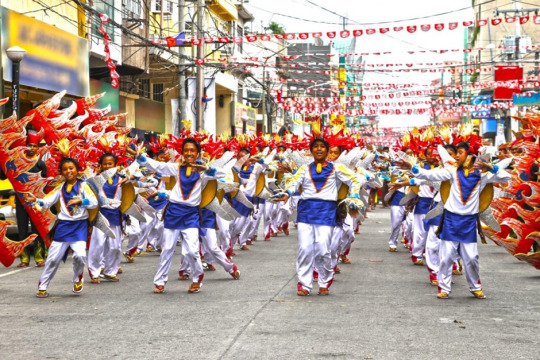
https://images.app.goo.gl/5FaAbCKMi2qUgHDeA
A City with a Heart
It is unique to grow up Ilocano. It is waking up every morning to the aroma of dinengdeng being cooked by my nanang (mother) in the kitchen. She would say to me, "Agan-annad ka, anakko" (be careful, my child), and instruct me to appreciate every grain of rice. Today, being a student here, I still hold to those teachings.Now that I'm already in Tuguegarao, these values still belong to me. I talk in Ilocano with my vendors and friends and seek out the Ilocano foods, such as dinakdakan, whenever homesickness strikes me. Respect is important to me, so I always address seniors as "manang" (ate) or "manong" (kuya) and "ading" (nakakabatang kapatid) regardless of whether it's just after meeting them or not.

https://images.app.goo.gl/oxouxKYTjKng8tzt6
Traditions That Last
Growing up in Gattaran, weekends always felt like celebrations. My parents would cook Ilocano dishes like pinakbet and sinanglaw, filling the air with the rich smell of bagoong and fresh vegetables. We’d eat together on woven mats, sharing not just meals but stories. Those moments taught me the value of connection and togetherness. What's unique about it is the way everyone is all together sharing food, jokes, and prayers. It's not so much about the gifts or the food as that sense of being home. Since I moved to the city, I don't get to return as often, but the memories stay and remind me what family is.




https://images.app.goo.gl/bfPHiqameSVVc1P78
https://images.app.goo.gl/ssmz5rDj2MjJZ6Uv8
A Dish to Remember
Food has always been a big part of my life. Being an Ilocano, the dishes are simple but rich in flavor. Ilocano favorites such as igado, dinardaraan (dinuguan), papaitan, and pinakbet bring me home.




https://images.app.goo.gl/eNC9WFDSUcu4pgy29
https://images.app.goo.gl/3LF8Dm6JZqHTPw526
https://images.app.goo.gl/x8u448scyTN4ZA7KA
https://images.app.goo.gl/kUTFQcF37x2w7SHW8
But Tuguegarao presented the legendary Pancit Batil Patung. A dish of poached egg, carabao meat, some vegetables,noodles, different toppings and the eggsoup. It's a combination of strong flavors that best describes Tuguegarao's mixture of cultures. Sweet, savory, and filling all at once. It tastes good and different, like the city.

https://images.app.goo.gl/9gK7R1vJ2W8roeiS8
Proudly Ilocano
Life in Tuguegarao has shown me the importance of staying proud of one's Ilocano heritage despite embracing change. But being Ilocano means keeping what matters family, simplicity, and pride in where we come from. All that I carry each day, in Gattaran or Tuguegarao. We are practical "matipid" but generous when it matters, humble but proud to be. And honestly? That's what keeps me going, even on the bad days. Wherever life takes me, I walk with pride, carrying the love, lessons, and stories that comprise our Ilocano heritage. Life here is not always easy, but it is full of opportunities to learn and grow.Agbiag ti Ilocano! Each day here reminds me that home isn't always where you are it's who you are. While I struggle here, I've learned to blend my heritage with the new city life. Life here may be quick, but the Ilocano in me remains steady, reminding me of my roots. Tuguegarao will always be another home.
1 note
·
View note
Text
Yaw i Tuguegarao: The Heart of Cagayan's Culture and Traditions
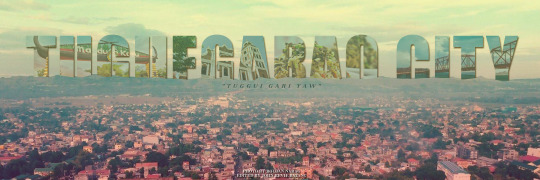
Growing up in Tuguegarao City, I’ve always felt a deep sense of pride for our home, not just because of the hot weather (yes, we all know how famous it is!), but because of the rich culture and warm traditions that make us who we are as Tuguegaraoeño. There’s something special about this place, and it’s not just in the heat, it’s in the people, the customs, and the shared sense of community.
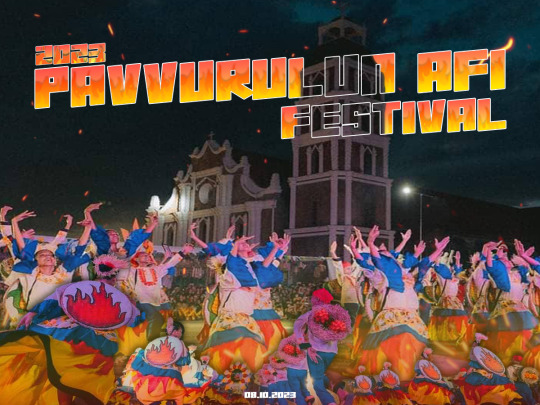
Our Traditions Make Us Unique
Tuguegarao is not just a place you pass through; it’s a place where tradition lives and breathes. Every August, we celebrate the Pavvurulun Afi Festival, a time when the whole city comes together. Rooted in the traditions of the Ibanag people, the festival’s name translates to “burning fire,” with Pavvurulun meaning “unity” and Afi meaning “fire.”
The music, street dancing, and food stalls bring so much life to our streets. It’s more than just fun, it’s a way of showing love for our city and honoring our roots.
I actually joined the street dancing, also known as TugSayaw, back in my elementary and high school days. It was a great experience to take part in the celebration of the feast of our patron saint, Saint Hyacinth.
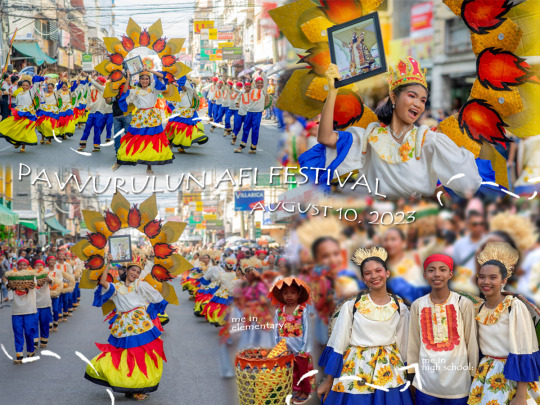
Family, Food, and Faith
What I love most is how Tuguegaraoeños deeply value family, food, and faith. You can’t visit a home without being offered something to eat or drink, usually sokolati or tsokolate, a traditional hot chocolate made from tablea: discs of pure cacao that are fermented, roasted, ground, and molded into tablets. It’s often served with the famous bibingka from Triple M, which is owned by my grandmother’s sister. It’s located right beside our house here in Libag Norte.
Another must-try food in Tuguegarao is pancit batil patung, a beloved noodle dish that’s more than just comfort food, it’s a cultural icon of the Ibanag people. Batil means “beaten egg,” referring to the egg-drop soup served on the side, and patung means “toppings,” because the noodles are generously loaded with them.
We also take time to attend Mass, say our prayers, and reflect on our blessings in historic churches like the St. Peter Metropolitan Cathedral Parish. This 18th-century cathedral is one of the largest in the Cagayan Valley region and serves as the seat of the Roman Catholic Archdiocese of Tuguegarao.
Its origins trace back to 1604, when Dominican friars established a mission in Tuguegarao and built the first structure of the church. Years later, construction of the current cathedral began and was eventually completed in 1768. Over the centuries, the cathedral has stood witness to many significant events and has undergone several restorations, especially after sustaining damage during World War II.
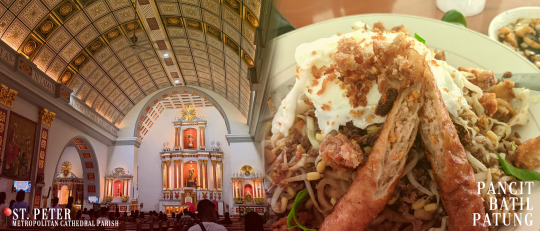
The Meaning of “Yaw i Tuguegarao”
“Yaw i Tuguegarao” means “This is Tuguegarao”, and to me, it’s more than just words. It’s a proud reminder that our city is full of history, heart, and homegrown warmth. We may be known for the heat, but I believe it’s the people, culture and traditions that truly make Tuguegarao shine.

Why I’ll Always Be Proud
No matter where life takes me, I’ll always carry the spirit of Tuguegarao with me. It’s in the way we smile at strangers, help our neighbors, and honor the ways of the past while moving forward.
Yaw i Tuguegarao. This is my home. This is my pride.
1 note
·
View note
Text
The tradition of ilocano in tuguegarao city.





The tuguegarao capital city of cagayan so what is tuguegarao and what are the traditions there first what are the attractions in tuguegarao city these are the Callao cave, Buttun bridge and St. Peter Metropolitan Cathedral these are just some of the attractions in tuguegarao city. So let's get back to the topic, Afi Festival or the Dance of a Thousand Torches It is held on August 16. So what exactly happens here every August 16? It's a celebration of unity and cultural continuity, symbolized by the lighting of fires and torches. The term "Pavvurulun Afi" means "Unity of Fire" in the Ibanag language. The festival marks the city's founding, which is believed to have been carved out of the wilderness by fire, hence the name "Tuggi gari yaw" meaning "This used to be fire. The highlight of the Afi Festival is the conceptualization of fire as the main element which pushes our people to work hard for a bountiful crop and the fiery awakening of the community to realize individual and community goals,” Soriano said.He explained that such concepts are captured in a choreographed dance frenzy of thousands of students carrying torches, which depicts the origins of the people and Tuguegarao and portrays the historic past as the city moves towards its future. https://tuguegaraocity.gov.ph/AFI%20FESTIVAL%20AWAKENS%20TUGUEGARAO%20CITY/180But let's focus on the traditions of the Ilocanos in Tuguegarao City of Cagayan.So what are the traditions of the Ilocanos who live in Tuguegarao City? One of these traditions is the atang. The atang is the Ilocano offering of food to the souls or the dead. In Ilocano weddings, they still practice feeding the guests, and by nightfall, this also marks the beginning of the dancing. This is where the fun starts — the young women seated are invited to dance, and even the drunk godfathers of the couple start dancing too. They give money for the songs they choose sometimes it's a large amount, sometimes it's small. The parents of the couple also have their own celebration, which they perform through a dance in front of many peopleThe Superstitions and Beliefs of ilocano in tuguegarao city. Dropping a fork there a male visitor, while a spoon indicates a female visitor.Sweeping at night is said to be forbidden because it is believed to drive away luck.The food traditionPinakbet - This have a (ampalaya)engplant okra and squash and have a (banggoong) It's a traditional Ilocano dish that highlights the region's love for local vegetables.Onee of the famous food in tuguegarao city.The pancit batil patong It is an iconic noodle dish that originated in Tuguegarao City, located in the province of Cagayan in the Cagayan Valley region. It is one of the most popular foods in the area, with a story behind how it began and became a significant part of the local culture.Batil" means beaten egg – it's the soup seved on the side, made with beef broth and whisked egg."Patong" means to put on top – because a fried egg is placed on top of the noodles.These Ilocano words are some of the basic words in the Ilocano language:Ayayaten ka – I love youKinnam – Cursed wordsManganen – About to eat / Will eat nowNag-gwapo ka – You are handsomeNag-pintas ka – You are beautifulThese are just a few Ilocano words. Although there are many more, the Ilocano people living in Tuguegarao are known to be kind.This is all I know about the traditions of the Ilocano people in Tuguegarao City. I hope you learned something from my short presentation about the traditions and language of the Ilocanos in Tuguegarao City
1 note
·
View note
Text
Cultures and Traditions in Peñablanca Cagayan
Like any other society in the world, ethnic Itawes group is proud of a unique society of its own. The Itawes people form of the Pilippine society and as such they affirm to stand by their own culture. They live their lives according to how ancestors enjoyed their day to day connection with one another. The mother tongue being use by the Itawes is “Itawit”. Itawes people are also known for being approachable and easy to go with. Itawes and Ibanags share something in common mostly in the words being use in their dialect. The Itawes are among dwellers of Cagayan Valley in northern Luzon.
As a family, the Itawes perpetuate the extended family. This practice makes the members very close with one another that even down to fourth and fifth generation are still supported and cared by parents.In the field of livelihood, farming is their means of support in living. They also raise agricultural products such as rice, corn, peanuts and beans. They love to cook “dekat and bebengka” during celebrations. This is usually done by the older people and they do it early in the morning. This dekat and bebengka is being described as the sticky rice and known for being flavorful, also coffee is best to pair with. On the other hand, Itawes also have their belief in the black magic or which is preferred to “tammay and anannung” this is inherited and past down from generation to generation. It is usually performed by the old ones. They also believe on the bad spirits that’s why they have their dos and don’ts to avoid whatever curse or ritual that may happen. In terms of their medicinal practices, some people go to “mapiyyat” in Tagalog we term it as “manghihilot” when some of the members of the family get sick. This medicinal practices is said to be the process wherein there are rituals being done by the minappiyat believing that this will help the sick to recover and heal. Also there is what they call the “minakatta” this is applicable to people who are seeking for their lost things and usually the minakkatta asks his/her customer want curse they want to do with the person who steal their things,this will be their basis on finding and knowing who is behind the stealing of one’s property. Moreover, In constructing a new house or building structure, the owner must place few drops of blood of a white chicken on the cornerstone for it to become durable. Experiencing an earthquake is not good for a pregnant woman, as it is believed to be a harbinger of bad things that could happen during pregnancy. We believe that it could cause a possible miscarriage or premature delivery. We also perform this with pregnant animals.


\\family extended

\\Our famous sticky rice, we call this bibingka or dekat
When a loved one dies, the bereaved must not take a bath throughout the wake, its bad to wipe the dining table after eating,do not usher a visitor when they leave. It’s bad to eat round-shaped fruits like guava because the eater will develop goiter, bring home food is not allowed. Wiping the table during wake will mean the rest of the family and relatives will follow. Relatives and friends bring voluntary help in kind and cash called “tappaw” to the breaved to show sympathy and concern in times of mourn. Death among the Itawes galvanizes not only the family but also the neighborhood or community into action. Members of the family are prohibited to sweep the floor. At the burial site, family members turn their backs as the coffin is closed. Afterwards, people walk around the “panchon’ without looking back as they go directly home.
In wedding celebrations, Itawes love dancing “dayang- dayang” it is usually danced by the elders. ‘Gala’ is also practiced,this is where visitors give their gifts or any voluntary amount to the bride & groom. In addition, the Itawes beleived that inoder to have giod harvest, “Talobini seeds is used in planting.This is being kept in the granary for a period of time. In Christening,Godparents also would receive one pair of “babbag” (steamed sticky rice flavored with sweetened coconut milk) from the family of a newly baptized baby in exchange of the Christening dress with complete set of accessories needed by the baby. The value of helpfulness and concern binds Itawes people where “ivvet” (bayanihan) is practiced especially in times of work. Folks would love to render “tannawa” (free service) to neighbor like “mappatunat” (cornerstone ceremony). Through this practice they take turns in helping one another . This is very helpful for those who cannot afford paid labor in thier work.They also celebrates their festive like KilingKingan Festival where they prouldy show the beauty of callao.And the KilingKingan also symnolizes the “Kalaw” birds.

\\ dancing dayang dayang in wedding celebration "gala"




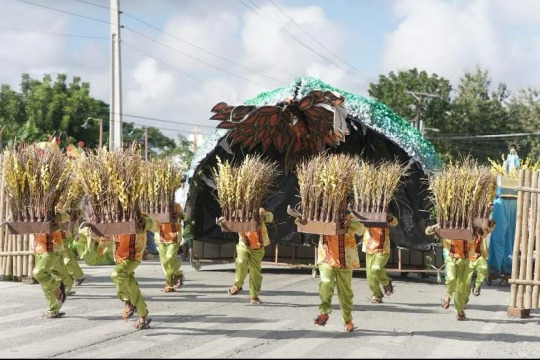
\\ Kilingkingan Festival
Indeed Itawes people are unique in their own practices,beliefs,customs & traditions. Having its own beauty that’s worth preserving for. This social phenomenon is something embedded among filipino folks which is hardly or irresistably transferred from one generation to another. This is all because no matter how advance development or industrialzation,the old ways of life style is still evident.
1 note
·
View note
Text
The Daily Struggles of Small Food Business Owners
For small food business owners, sourcing fresh produce is a daily challenge. The quality, pricing, and availability of vegetables and ingredients play a crucial role in their ability to serve customers and maintain profits. We spoke with seven business owners from different parts of Cagayan de Oro to understand their struggles and what could improve their buying experience.
Trust and Quality: The Foundation of Fresh Produce Buying
Most business owners prefer buying from trusted suppliers to ensure freshness. Rose Marie from Lapasan and Rosa Lim emphasize that sticking with reliable vendors guarantees consistent quality. Others, like Neneth from Bugo and Alvin Mendoza from Lapasan, rely on personal inspections—checking texture, color, and signs of damage—to ensure they get the best produce available.
Marites Villanueva, a carinderia owner, highlights the frustration of finding wilted vegetables in the market, a common problem that affects food quality. Ricardo Lopez, on the other hand, ensures freshness by buying early before supplies run out.
The Struggles: Late Deliveries, Price Fluctuations, and Limited Availability
One of the most common issues business owners face is unreliable deliveries. Many of them, like Neneth and Alvin Mendoza, mention that late deliveries affect their inventory, which in turn impacts their ability to serve customers. Some even waste time traveling to markets because deliveries fail.
Another major issue is price fluctuation. Several business owners, including Rosa Lim and Roberto Dela Peña, express frustration over sudden price changes that force them to adjust their food prices or settle for lower profits.
Additionally, limited availability of fresh produce leads to major disruptions. Rose Marie and Marites Villanueva have had to change their menus or cancel orders when supplies were unavailable, causing inconvenience and customer dissatisfaction.
How These Challenges Affect Their Businesses
For these entrepreneurs, delays and shortages directly impact their bottom line. Some, like Roberto Dela Peña, have to travel to other markets when prices spike or stock runs out—an additional expense that eats into their profits. Others, like Marites Villanueva and Rosa Lim, have had to adjust ingredients or menu offerings, which can lead to lost sales and disappointed customers.
For those who depend on timely deliveries, like Alvin Mendoza, delays can result in customers seeking fresher alternatives elsewhere, reducing customer loyalty. The constant struggle to balance affordability and quality makes running a small food business even more challenging.
What Would Make Buying Fresh Produce Easier?
When asked what improvements they would like to see, most business owners pointed to the need for better supply chain management. Some of the most requested solutions include:
Real-time stock and price updates – Roberto Dela Peña and Rose Marie believe that if suppliers could update buyers on availability and pricing online, it would save them time and effort.
A reliable delivery system – Ricardo Lopez and Rosa Lim suggest that having produce delivered directly to their stalls would eliminate the need for time-consuming market trips.
Pre-ordering systems – Marites Villanueva proposes a system where she can reserve fresh produce in advance to avoid shortages.
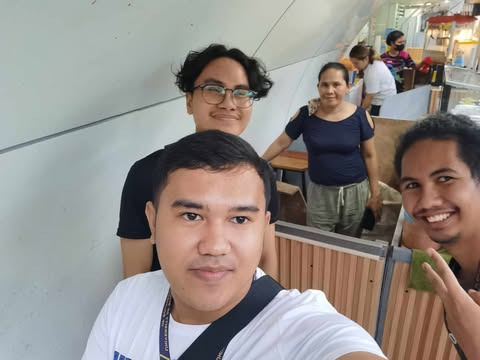
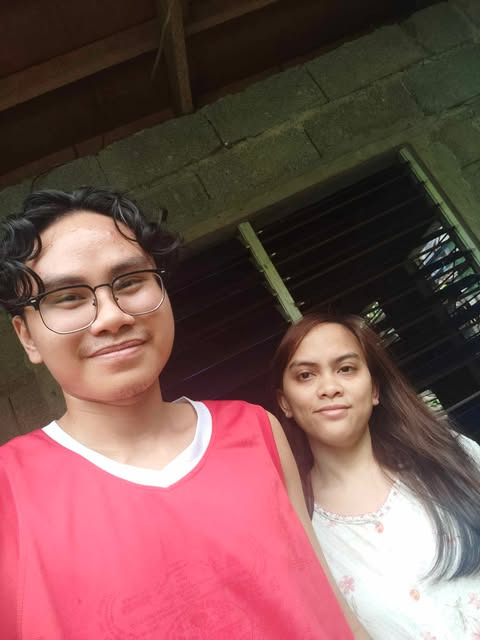

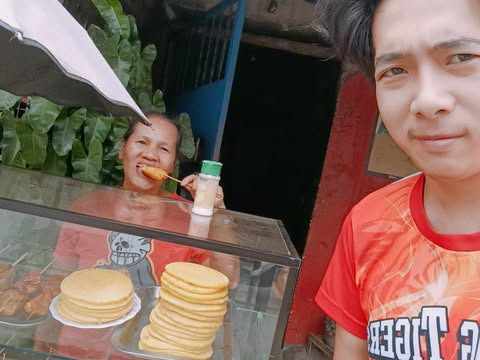
0 notes
Text
Palermo, Sicily - Part 1
38°07'55" N, 13°20'8" E
“Possibly, Daedelus recognized that he had reached a place in which the most lush magnificence, the most sybaritic pleasures console us for – without ever lying about – the harshness of existence.” - Francine Prose, Sicilian Odyssey
Video first for epic context!
vimeo
Just after sunrise our plane cascaded through the clouds and revealed a landscape that was reminiscent of Santa Barbara, California or Kona, Hawaiʻi: green mountains embraced by turquoise blue water. Conca d'Oro (Golden Basin) is the area where the city of Palermo rests on the Island of Sicily and where 28% of Krystal’s DNA traces its origins. Cagayan de Oro (River of Gold) is where Mary’s family traces their lineage on the Island of Mindanao in the Philippines. This correlation is not wasted on us! We each descend from the golden lands of our ancestors and wow, Palermo, has not disappointed.
Storied as the most conquered city in the world, Palermo immediately meets you with a dizzying confluence of cultures. The food, architecture, people, and spirit of this city is a truly wonderful smash of the surrounding parts of the globe accessible by boat. It is not possible to sum up the experience into words, images, or even video. You’ll have to see, taste, and hear it for yourself. We will do our best to share the pieces that moved us to our core.




The graffiti is stunning - some of the best we have ever seen. The streets are steeped in history and secrets that are reminiscent of no other place and yet seem undeniably familiar. It could also be that almost everyone here looks just like Krystal. We wandered for days with our jaws flapping at the beauty surrounding us. After passing a sign for a community archive that led us on a grand adventure we found Krystal’s 4th great grandfather’s birth certificate in a really old book. We spend most days wandering the cobbled streets, trying to stay warm, and in total awe at just how fast a sunny day can turn into 50mph winds and a downpour.




The best place to miss out on possible downpours is always a museum! Krystal recently read “The Map of Salt and Stars” a magical tale that tells of many things (you should absolutely read this book) including geographer Muhammed al-Idrisi and his Tabula Rogeriana created for King Roger II of Sicily in 1154. The Google Translated version of the Palazzo dei Normanni website seemed to indicate that the foyer was home to a replica celestial and terrestrial planisphere by al-Idrisi, so we sort of b-lined it to the palace. No replicas here, to see any of al-Idrisi’s creations you have to go to cities like Paris, or London, or Istanbul even though they were created here in Palermo. BUT the Palazzo totally blew us away! The mosaic work alone could take a lifetime to fully appreciate.
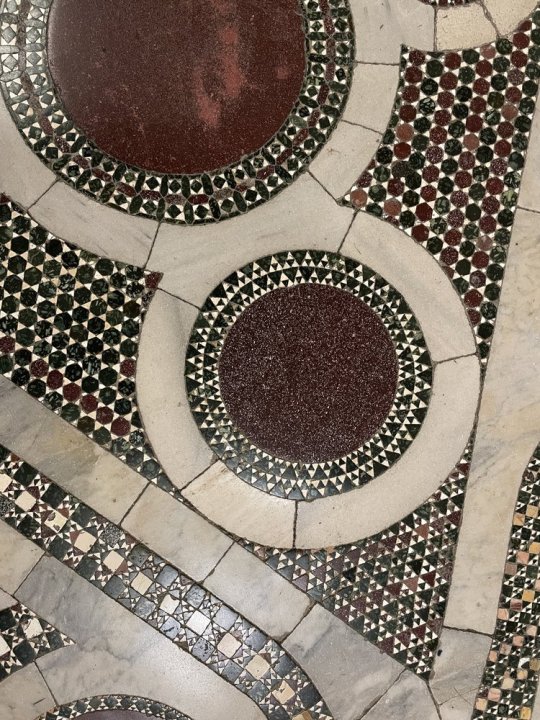







An entire day was spent soaking on operatic genius at the Teatro Massimo - check the video to indulge in some of that magic. We also spent a whole day locked in a pretty spectacular argument, but taking your life into your own hands every time you walk outside (have we mentioned how people drive in Italy?) leads to thin nerves that can fray if not tended carefully. After a day of serious learning and growing as a couple we continued our regularly scheduled programming and visited the gallery at Villa Zito. The work displayed provided an awesome window into the past, present, and future of Palermo. We really enjoyed the black and white photography by Lia Pasqualino and her images of famed mafia photographer Letizia Battaglia led us to watch “Shooting the Mafia” while hanging around the apartment to meet the plumber. You can see the work at Villa Zito virtually and we caught “Shooting the Mafia” on Kanopy through our Hawaiʻi Public Library account and our trusty VPN (yay for libraries!)




We are trying to take more pictures of the food before we eat it, but we still have a ways to go. Lessons from Palermo: don’t order sardines in your pasta no matter what anyone says, the nuns make the best cannolis, and Sicilian canned tuna is out of this world good. We are steps from the Ballaro Market and no matter what we do our presence screams American tourists coming and sometimes we pay for it, but not as much as Krystal’s mom is paying for stuff in the middle of Wisconsin! If you are keeping a bucket list add “eating my weight in Sicilian oranges” and drinking “Amaro di Arancia Rossa” to the lineup. We are off to hunt for more magic, do more epic work, and Mary is going to eat grilled intestines while Krystal watches.




In family history land, the hunt for jure sanguinis (Italian citizenship through blood relation) is in full swing. A record Krystal thought went to her great grandfather, Theodore Pecoraro, for naturalization in the US didn’t match up and no record for him exists in the state of Wisconsin! This is possibly exciting. Italian handwriting is abysmal, but at least they have pretty good indexes! We were able to find the birth and marriage record for the fellow with the mustache, Antonino Pecoraro and his wife Maria Vitale. A wander into a photo shop in Palermo revealed that the family is “definitely not rich” judging by their shoes. Also stay tuned to see if Maria Gigante, the gal clutching her purse in the photo below and Krystal’s 3x great grandmother, is related to the Gigantes of not so glorious fame in New York and Sicily.



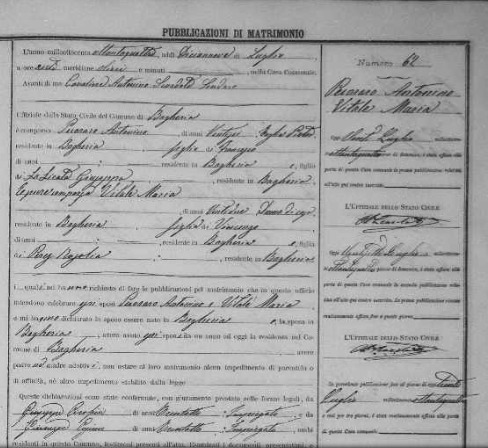
0 notes
Text
Holy Week 2017: Things To Do in Cagayan Valley

The bus station's packed with people streaming in and out, all of them dressed in their most comfortable clothes, bags and packages in hand, each one seemingly excited to go to their respective destinations. It was the Wednesday where most work is finally at halt to give way to the celebration of Holy Week which happens to be last April 12.
My family decided to have a quick vacation in my mom's hometown Cagayan Valley, specifically in Solana. The whole bus ride took almost 12 hours that when I woke up it's already 10 in the morning, passing by tall fields of rice and corn, and trees growing on terraced hills. An occasional bridges and ponds and river winding through a flat stretch of land.
Located in Northeastern side of mainland Luzon, not many people think of Cagayan Valley as a vacation spot but it is a home to many old Spanish churches, caves, and the longest river bridge in the Philippines. Beating the scorching heat, here are some things you can do while you're in Cagayan:

Visit Basilica Minore of Our Lady of Piat.
It has become one of our traditions when we go to Cagayan Valley — to visit this church. A significant pilgrimage site of the North, it is one of the 12 minor basilicas in the Philippines and a home to the venerated Black Virgin Mary. The church structure is mainly made of red bricks and stained glass windows located on top of a hill to avoid floods. Surrounding the basilica stood the Piat Basilica Museum, Blessing sites for religious items, Parish Convent, and life-sized representation of the Stations of the Cross.

Cross Buntun Bridge.
Tagged as the longest river bridge in the country, it stretches from Tuguegarao to Solana and spans over Cagayan River, the largest river basin in the Philippines. Since we live in Solana area, we always cross this 1.098 km long bridge— that long enough to carry more than 18 tons of vehicles. I haven't tried going to the bottom of the bridge though.

Explore Callao Cave.
Known for the chapel built inside the cave, Callao Cave, nestled in Peñablanca, consists of seven chambers which illuminates light filters in from a natural crevice above. It was an uphill battle to get to the cave entrance as it takes 184 steps going up so have your water bottles and handkerchiefs ready. For only 20 pesos, you can wander around the beauty of a limestone cave where stalactites and stalagmites have formed inside. There's this stillness and tranquility that you can feel inside the cave especially with the presence of the chapel. After which, we tried the wooden boat ride in Pinacanauan River passing through a small rainforest, a bat, scenic rocky cliffs and picturesque river bank with clear water.

Ride Kalesa.
We always make sure that we try riding kalesa every time we visit our province to have a tour around town. As one of their means of transportation, riding kalesa is very cheap and very convenient as you can frequently see a lot around the town. Made of a wooden cart with a roof and a pair of rubber wheels, it can seat as many as eight persons. It feels nostalgic riding the kalesa as somehow it takes you back to the Spanish era.

Eat Ilokano’s local delicacies.
Ilokanos have rich delicacies and some of them are the Pancit Batil Patong, Papaitan, and Special Halo-halo. Pancit Batil Patong, also known as Pancit Tuguegarao, is a noodle dish made up of miki and an overload of toppings and is one thing you should try if you ever get to visit the town. Another dish popularized by Ilokanos is the Papaitan. It is a bitter and spicy stew consisting of beef or goat innards as liver, heart, tripe and the bitter bile (apdo). On our way home, we bought halo-halo and to my surprise, the halo-halo consists of malagkit rice plus the other usual ingredients. Also, they put yema on top instead of leche flan or ube which also tastes good.
► Holy Week x Probinsya Life
Watch the video of our Holy Week trip to Cagayan Valley!
#travel#Holy Week#Cagayan Valley#Tuguegarao#Things to do in Cagayan Valley#Things to do in Tuguegarao#What to do in cagayan#What to do in Tuguegarao#What to eat in Cagayan#What to eat in Tugeugarao#Our Lady of Piat#Buntun Bridge#Kalesa
22 notes
·
View notes
Text
Continuing the journey of watching Survivor with my brother, we just started Pearl Islands today and his girlfriend is joining us now.
Within 2 seconds of Sandra’s first confessional, they both said “I love her!” and when she was bartering in the village my brother was like “She’s amazing, she has to win.”
So this season should be fun.
#survivor#also as an update: we've gone through philippines. tocantins. cook island. millennials v gen x. china.#micronesia. and cagayan. so once we finish pearl islands we'll watch HvV since he'll know 11/20 contestants for that season.#his girlfriend joined us for the final 2 episodes of cagayan (had to catch her up a lot) and i was worried she wouldn't be into it#but she's like 'oh i watch the bachelor and love island. i'm so into reality tv' and i'm like 'great! we'll have fun'#also... i've never seen pearl islands in full... yes i am a disgrace to the survivor fandom. wait until i tell you i've never see HvV either#both those seasons got spoiled for me by the time i really got into the fandom so i never found the time to go back and watch them#(i'm very much a new school fan working my way slowly to the older seasons i have access to)#(and any season that has missing episodes on hulu i have not watched. aka anything before Exile Island Panama sorry)#(and we'll have to bootleg episode 6 of pearl islands since it's not on hulu)#so while i know boot order and big events of both seasons it will be interesting to see the nuances#and this will be one of the few times i'll be watching seasons for the first time alongside him instead of rewatching.#after Heroes vs Villains i still haven't decided what to watch next. i want to get him to see Second Chances so maybe SJDS first#also my brother keeps saying stuff about contestants and watching my face for reactions so i gotta be careful#luckily tonight we were eating while watching so i just took a big bite after he raved about Sandra before looking at me for a reaction
6 notes
·
View notes
Photo









Since June of last year, I've heard life-changing stories from the leadership of Cong. Mujiv Hataman and Mayor Sitti Djalia "Dada" Turabin Hataman in Basilan from my good friend JL. The Basilan that we know today is a different era from what it used to be, and is a product of compassionate, people-centered, and consultative governance. Quite honestly, I'm a lowkey fan of this couple.
I am continously amazed that these kind of people exists — coming from very influential families in Mindanao, they decided to dedicate their lives to advocating for indigenous people’s human rights, and breaking norms for progressive changes in Basilan, and in the Autonomous Region in Muslim Mindanao.
I first met Cong. Mujiv in Cagayan de Oro. He was really simple, but he has this commanding aura. He can make the crowd go silent and listen to him. He can make the mood light, but can still his convey his thoughts with conviction. He is a damn good public speaker. Anyway, fanboying aside, I really admire him for bringing the change he envisioned — making Basilan a self-sufficient province, giving it the fortitude to withstand and recover quickly from any conflicts.
Here’s a glimpse of a fishing farm in Tabiawan, Isabela City where we got some rest after a tiring day in Marang Marang while we eat kuya Ansary’s mouthwatering chicken sisig (read: babalik balikan yung sarap I swear to god.)
14 notes
·
View notes
Text
Live in the present.

"Live in the present."
That has always been my favorite line. Even at a young age, I have always been scared of the future, missed the past and hated the present. This line taught me to just focus on the "now" and to do my best when it is still possible and to not regret anything. In this adventure called life, I have experienced a lot, which adds to my desire to go back in time.
Greetings, Hi, My name is Julien Ashly G. Manalang, and you can call me Yen. 16 years old, born on July 22, 2006 in Santa. Teresita, Cagayan. My father, the busiest person I know, is a businessman. My mom, the smartest person I know, is now an angel, watching me and my two sisters as we grow.
I was the middle child, most of the time forgotten and lacked attention, making me grow and become an independent person from a very young age. While people were focusing on my two sisters, I focused on myself, creating the person I am today.
This might sound sad and all that, but I just looked at this from another perspective. Without it, I may never be as self-assured and proud as I am now. Still, I am not perfect and, of course, need a lot of work. I am proud of what I have become. I may not be satisfied and still long for more, but that's just me, wanting to be better.
My hobbies revolve around art, music, K-pop, watching anime, reading, and a lot more. I draw, I play instruments, I sing, I dance—I have lots of hobbies, but I don't consider them talents. I may be talented in the arts, but I am not Pablo Picasso; I may be talented in singing, but I am not Lea Salonga. I don't believe that we are born into these capabilities, but we practice our way into them. Like me, I just did these for fun and practiced until I got to this point.
I never excelled in these fields, that's why I strive my best in school and academics. I've been entering academic contests since elementary school; Math Challenges, Quiz Bees, Journalism, Broadcasting, you name it, I've probably entered once. I won a few times, but most of the time I was scared and was not confident.
I was not proud of my performance and decided that I must be brave. This motivated me to be an excellent leader in my previous school. I found courage in myself and showed myself to the world. I was elected Treasurer of the Supreme Student Government. Though balancing my organization, leadership, and academics was difficult, I persevered and graduated with highest honors and ranked in the top two of my batch.
I still managed to maintain a good social life even with the weight of being an honor student. I have friends for whom I am very grateful. We help each other in academics and lift ourselves up when times are hard. Balancing school and fun, we still go out every now and then to relax, on the beach, in parks, and to eat out.
I honestly don't know my own personality; I just believe what others say about me.
One thing about me is that I can easily adapt to different circumstances. I can change certain things about myself to make myself appear more likable to another person. I reflect what I see to please people; I'm a mirrorball.

Where do I see myself 10 years from now? Was my learning in SPUP vital to where I’m leading to?
10 years from now, I will be 26 years old. I will have my bachelor’s degree and will probably have a job. I see myself as a successful woman, living independently in my own home bought with my own money. Money would not be a problem, as I am financially stable and able to buy anything I want. I would have established my own business that could support my needs. My life would be happy with my friends and my family.
Learning in SPUP is vital to what I'm leading to because this institution showed me a different take on learning. The school provides a quality education that will support my needs as a student. My relationship to the holy spirit were also deepened in this attending school. I believe that SPUP will teach me a lot of new knowledge that I can apply to being a better Christian citizen, and I believe that without entering this institution, I would not get as far as I dream of.
Was STEM the best choice after all?
All my life, I knew I was going to take STEM in senior high school. My interests in careers have always revolved around STEM. Even my course choices as of this moment are in the field of STEM. That is why, yes, I am certain that STEM is the best choice. The subjects in this strand are the ones I want to learn about more and to understand deeper, and I believe that this is the field wherein I can excel and be successful in the future.
What course will you take in college and why?
My decision can still change according to what happens in the future, but as of the moment, my decision is to take architecture. The beauty of real estate has always amazed me. I have always been astonished by the creativity of the architects who created beautiful buildings. To be able to design buildings as gorgeous as theirs and to make people wonder about who I am just by looking at my creations has always been my biggest dream. Through my hard work and creativity, I want to make my name known to the public. Therefore, I believe that architecture is the course for me.
Plus, I have always enjoyed all forms of art, and I consider architecture just a different form. From sketching to drawing to painting, I have always practiced it and I have grown a relationship with it.
In architecture, math is present. Although others may hate math since it is challenging, I actually enjoy it. I find math fun. It just teaches us to try and try again, and to eventually get the correct answer. You may get the answer on your first try, but you must not give up.
We may not be able to perfectly tell what the future brings us, but we can still exert our best effort toward achieving the better future we know is promised for us. May we see the world and our environment as a healthy motivation for us to strive for the best, to see the good in everything and to live life in the present.
Once again, this is Julien Ashly, your future architect, and I thank you for taking the time to read my story. I hope life gives us what we deserve. With the help of God, I am sure that we will be happy when the time comes. Live in the present, learn from the past, and work for the future.
さよなら
Sayonara! (bye)
- lots of love, yen.
Manalang, Julien Ashly Goze
11 - MICAH
2 notes
·
View notes
Text
Hi! my name is victor evan mocorro and you have to call me evan not victor, mocorro is okay but victor is a no no! kasla lakay nukwa.

Anyway, I'm BSED student major in english. I can say that I'm a good student because i do all the works that needs to be done. and I'm a observant person . I don't talk much sometimes but can be very talkative in certain times. I'm the second child in the family and its safe to say that I'm no ones favorite. I love video games, PC games and mobile games specifically. I from solana cagayan but live here in tuguegarao city. I have 2 dogs thats always makes me happy everytime I go home. And my casual routine in a daily basis is simple. Eat, Study, Sleep and Ipasa mo Repeat. #goodstudentsievan
As future educator, I see myself teaching english subjects to students who are struggling in speaking and communicating with use of the english language. I see myself as an inspiring teacher who shapes students to be the best version of themselves. I also see myself working abroad because there is a lot of money there. I had my plans laid out already and i hope it will not be broken by something terrible happenings what so ever. As an English teacher in the future i expect myself to not settle for mediocre life because mediocracy ruins excellency. So, as teacher I will use my platform to inspire and build the foundation of my students. And SPUP as my chosen school is great because they are the ones who taught me this way of thinking. To always aim the highest even beyond highest. SPUP is great not only that there are a lot of chika babes here. There are also great teachers who inspires students to be great and in the future? I want to be that kind of teacher. A teacher that will leave mark in the heart and mind of their students. And I encourage anyone who are reading this to not settle for less. We all deserve greatness. Our story is valuable. Out story of success!

"Was my course the best choice after all?" This question made me realize a lot of things writing this blog because you see, BSED is not my first choice neither 2nd, not even 3rd. I chose accountancy but failed. Education was not in my choice before because there is a stigma in our community. They see education majors inferior to other courses but when i entered SASTE. I realized that they are wrong. Yes, other courses or profession pays a lot more than education majors but when you look deeply to the work and passion of teaching. You will fall in love because your life will never be boring. You always have a good laugh when you became a teacher. And as a sentimental person? I think teaching is my passion because not only i value things, i also value people. And knowing i did something to their betterment. It makes me happy. I do believe that when i became a teacher someday. I'm going to give a lot of affection and love to students. be

2 notes
·
View notes
Text
Bike Touring the Philippines
Bobby Lagsa
For most of his life, Melchizedek "Merky" Aranas Garcia have been dreaming of traveling the entire Philippines-each of the 81 provinces, there is. His dream came true in 2019 when he biked around the country for the first time.
Merky is just one of the growing numbers of Filipinos who are taking the extreme length to pedal their ways around the country, exploring places most Filipinos can only dream of.

On February 24, 2021, Merky, along with fellow adventure bikers, Romeo Llante of Cavite and Valeri de Guzman of Baguio City started their journey to bike tour the archipelago all the way to Davao City where Merkey lives.
Garcia is a seafarer by profession and when he arrived in the country following a 14-months work onboard, he planned that he will bike his way home to Davao City.
Like Garcia, Llante is an engineer working in the Middle East for almost 10 years while de Guzman is a social entrepreneur.

This is not the first time for the trio to bike their way around the Philippines. Garcia did his first in 2019 right after getting off the ship. Llante also did an extended bike tour in 2019, spending six months on the road alone. de Guzman is also a veteran long-distance biker.
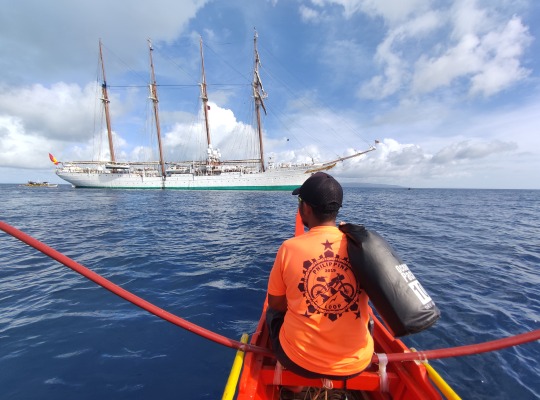
They left San Pedro, Laguna on the 24th of February, and for the next 45 days, they would pedal their way to Southern Luzon, Visayas, and Mindanao.
Garcia said that bike touring is an entirely different approach than just doing the Philippine Loop. “With bike touring, your aim is to tour the country rather than just passing by, doing the Maharlika Route all the way to Mindanao and taking the RORO (Roll-on, Roll-Off) ship to cross the island,” Garcia said.
"The goal is to tour, not just speed your way around the country, without even stopping to enjoy the destinations," Garcia said.
“When I was growing up, I dream of biking my way around Mindanao. When I had my apprenticeship on board, I saw how beautiful the Philippines is,” Garcia said.
Garcia added that back then, he had no money and thought of just biking his way to get to places.
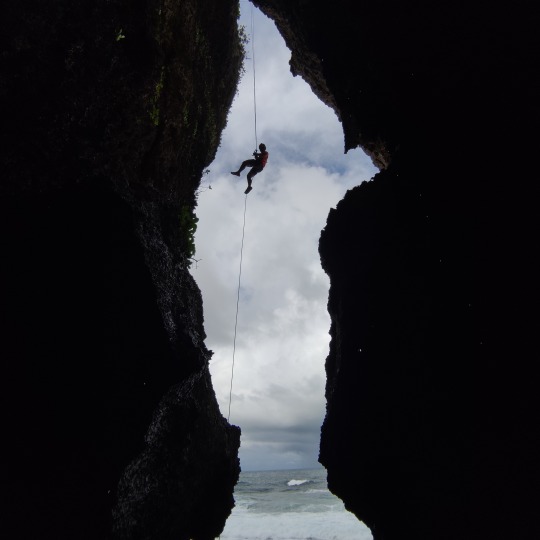
For Llante, it was an outlet to get away from the hustle of life in Cavite and from working overseas for an extended period.
OPEN TIME, OPEN BUDGET
What open time, open budget means is that they have no formal plans of what route they are going to take. “Anytime we can change our plan, we can change our route, we can change how long we are going to stay in a place,” Garcia said.
The trio agreed to their plan. They can spend as much time on the road as they can. They passed by countless tourism destinations during their 45 days on the road.

“I wanted to climb mountains,” Llante said. In his 2019 tour, he climbed 11 mountains including Mount Apo, Kitanglad in Bukidnon, Hibok-hibok in Camiguin Island.
They have crossed muddy road, climbed mountain roads just to get out-of-the-way waterfalls, rivers, and communities they wanted to explore.
“Our longest stay was in Samar, where we spent 2 weeks exploring the two provinces,” Garcia said.
They camped out in Huplag Adventure Camp in Bantayan Cliff, Ando Island, Borongan City where they get to experience sleeping on a hanging hammock with a 150 meters drop to the seas.

“We waited for the replica of Magellan’s ship the Juan Sebastián Elcano to arrive in Guiuan, Eastern Samar,” Llante said.
When the El Cano arrived in Homonhon Island, they rented an outrigger to get closer to the ship. “Sadly, we were not allowed to go on board because of Covid protocols,” Llante said.
After the El Cano crossing, they spend the next 2 days in Homonhon and Suluan Islands before heading back to the mainland and off their way to Leyte.
Along with their ways, they were met by fellow bikers who are only too eager to host them. “Sometimes, I informed friends who I met during the 2019 tour that I am passing by,” Garcia said.
“Sometimes, when they met us, they would bike with us to destinations, and when we get there, foods are already prepared for us,” Garcia said.
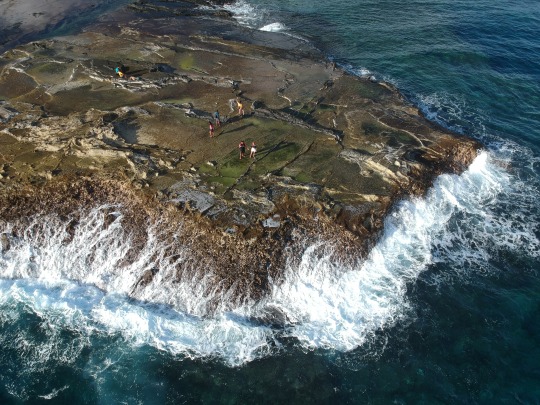
The trio, along with other bike clubs that hosted them, also held community engagement programs like feeding and giving school supplies for children.
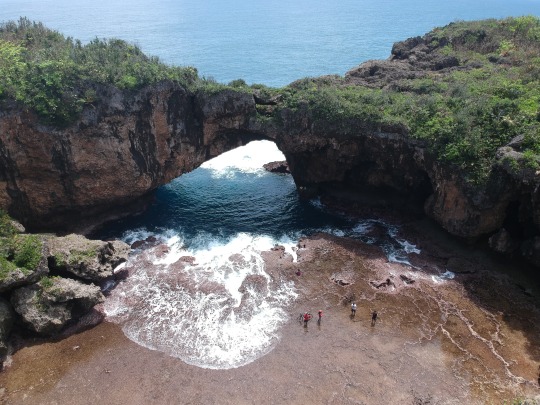
LOGISTICS, PREPARATIONS
Biking for an extended period of time can be a difficult task and it takes determination and courage just to conquer steep climbs and muddy roads to get to their next destinations.
“Before I arrived from my work onboard, I already planned my bike tour, told some of my friends I’m doing a bike tour again,” Garcia said.
Garcia wanted to invite friends so that it will be more fun. “It is more fun to share the road with friends who share the same passion as you are,” Garcia said.
Llante and de Guzman rise to the challenge of Garcia.
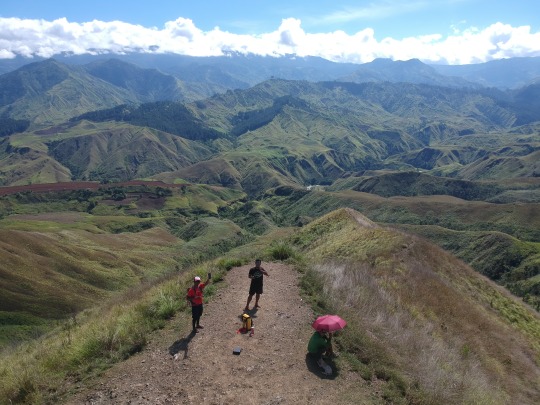
“My bag only consisted of 3 short pants, shirts,” Garcia said. On his backpack, he carries his drone that would prove to be very useful in getting dramatic, scenic shots.
“You only need to bring light materials, all our clothing are quick-dry,” Llante said.
Their daily budget is only 500 pesos per person per day, except for destinations that they would need to spend more, 500 was their daily budget which include foods, hotels, drinks.
"On the road, you need to eat well and hydrate well," Llante said.
“The plan really is to set-up tents by sunset,” Garcia said.
“We would sleep in barangay halls, beaches, gasoline stations, roads with trees we can hang our hammocks,” Llante added.

But mostly, Filipinos welcomed them to their homes, offering sleeping spaces. Experiencing the hospitality of the Filipino people was a humbling experience. "We are strangers and yet they welcome us, provide us shelter and food as we share our stories with them," Garcia said.
“When there is nowhere else to sleep, we would pay entrance fees to resorts and just camp on the beach,” Llante added.
There were days also that they do really need to take a good sleep to recover physically and had to spend nights in resorts or inns. “We need to rest, but hotels are our last resort,” Garcia said.
They also agreed never to travel during nighttime, except for one instance during the first few days of the tour. after pedaling for almost 18 hours, they arrived in Naga City around 11 pm raking in almost 200 kilometers.
“We agreed to pedal only during daylight, where sunset catches us up, we would set up camp for the night, we are not in a hurry anyway,” Garcia said.
200 kilometers is the most the pedaled in a single day, after that, their average is just about 80 kilometers per day.
There are times that they would need to rest at noon for an extended time as the heat of the sun becomes almost unbearable. “We rest where we wanted to, we don’t plan of getting to this town or that town, we stop at sunset,” Garcia said.
When they arrived in Davao City where Garcia is from, de Guzman had to make her way to Cagayan de Oro and left the two. De Guzman could be in Cebu as of this writing, doing her Cebu loop on and on her way to Negros Island.
THE PHILIPPINES IS A BEAUTIFUL COUNTRY
Garcia and Llante eventually pedaled their way to this city, spending two days along Sayre Highway, exploring Bukidnon. They arrived here on May 1 and spent 4 days here exploring and meeting with fellow Philippine Bike tour loopers.
Words on the biking community here were that de Guzman was met by an all-female bikers group and was given a warm welcome.
Bike touring the Philippines was a humbling experience for Garcia and Llante. They have pedaled almost 3 thousand kilometers and visited most provinces along the Maharlika Highway.
Garcia’s count crossed out 63 out of 81 provinces since he started his bike tour in 2019. Llante crossed out 11 mountains, and almost visited each province in the Philippines.
They have seen most of Filipinos can only dream of- touring the entire Philippines, learning cultures and traditions, meeting people, and experienced lgendary Filipino hospitality and conquering their own selves.
Garcia and Llante is a testament of achieving dreams even if it means just being armed with just bare necessities.
Garcia and Llante is now planning their next bike tour, hoping that more bikers would join them.
NOTE:
all photographs were provided by Merky Garcia
FOR THEIR 2021 Philippine Bike Tour, Garcia spent 35 thousand while Llante spent 50 thousand.
Since Valerie de Guzman was already in Cebu, she was not around for the interview.
#bike touring#bike touring philippines#philippines#philippine bike loop#biking#long distance biking#tourism#bike tourism#bike camping#merky garcia#romeo llante#bobby lagsa#manila to davao#luzon visayas mindanao#bike touring ph#travel#samar#ando islan#philippiines#mindanao#visaya
3 notes
·
View notes